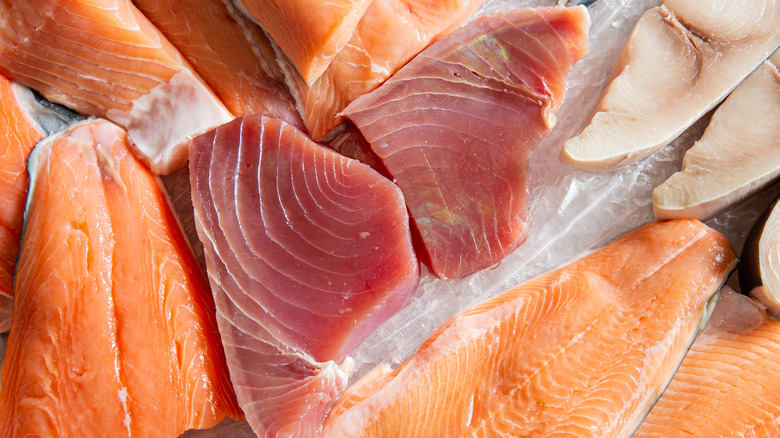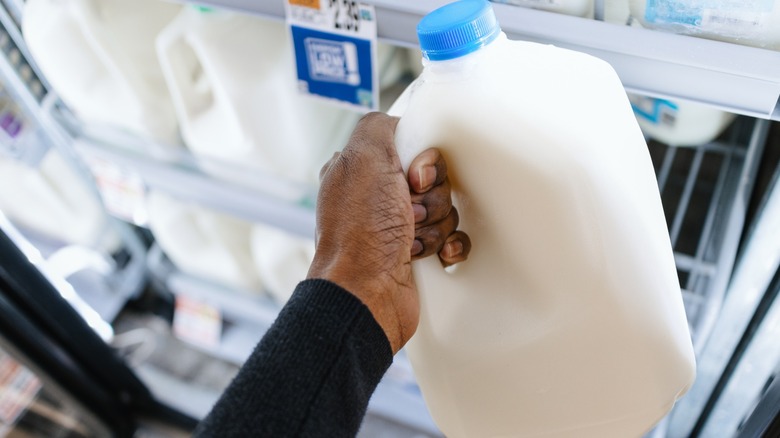Why Your Fish May Be Better Off Soaking In A Bath Of Milk
Fish is a delicious and popular protein, but some detractors really don't like it. A common complaint about fish is the "fishy" taste or smell that it gives off. A simmer pot of ground cinnamon can keep cooking fish from smelling unpleasant, but you can also get right to the source of the problem.
One of the mistakes people make when cooking fish is not pre-soaking filets in a milk bath. You see a milk soak as a common step in cooking catfish (specifically, buttermilk), but this technique is great for all types of swimmers. Soaking your fish pieces in a shallow dish covered in milk for around 20 minutes in the fridge will all but eliminate unwanted fishiness in both taste and odor from your dinner. This is especially true with fish that is extra-prone to a strong smell and taste, like salmon or swordfish. After marinating your fish in milk, dry it off with a paper towel and cook it as you normally would.
Note that milk is great for removing a gamey fish smell, but it only removes that "clean" scent of brininess that some people dislike. If your fish is truly rank, there's a strong chance that it's gone bad and you should throw it out posthaste. A milk bath won't work for resurrecting spoiled fish, and eating it could make you very sick. If your fish smells like the ocean it came from, that's okay. An "off" smell combined with other indicators like sliminess or discoloration should be taken seriously.
Why does a milk soak improve fish?
When a fish dies, a natural chemical in its body, trimethylamine oxide, begins to break down into trimethylamine when exposed to air. Trimethylamine is highly volatile, and its smell is pretty gross. The longer that fish decomposes, the higher the level of trimethylamine in the air, and the worse the odor. This is why fresh-caught fish will smell pleasantly oceanic, but old, spoiled fish will raise enough of a stink to attract every fly in your neighborhood. Milk contains casein proteins, which bind to the trimethylamine and neutralize it to some extent. A good milk soak will also work on other seafood like scallops and shrimp.
As a pleasant side effect, a milk bath may also make your fish more tender and juicy. The lactic acid in milk works as a tenderizing agent ... just don't let the filets soak too long, as they may become mushy from too much of a good thing! There's a reason that Southern cooks have long held onto the idea of soaking chicken in buttermilk before frying, as they know that this prep step makes their chicken succulent and moist. Compared to milk, buttermilk has more lactic acid, so you may get especially good results with your fish if you swap it for regular milk. Keep in mind that the extra acidity in buttermilk may impart a tangy flavor that is great for fried fish but maybe not as desirable for broiled or baked filets. No matter which milk you choose, consider reaching for the dairy case when cooking fish!

